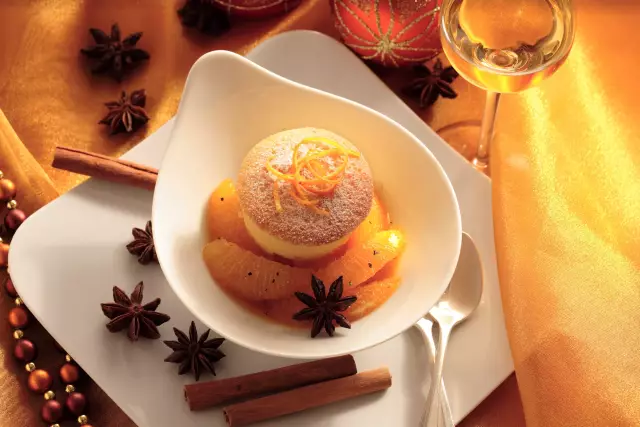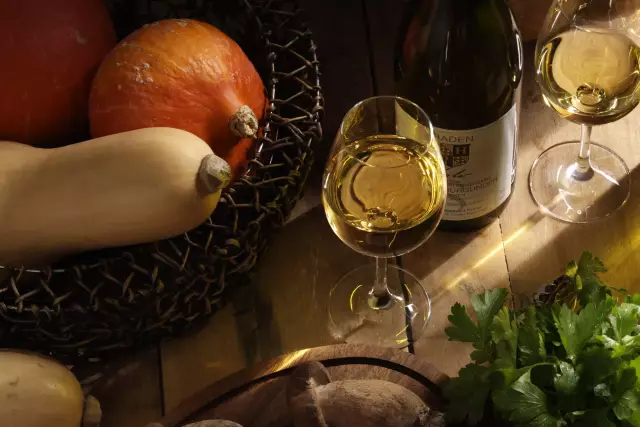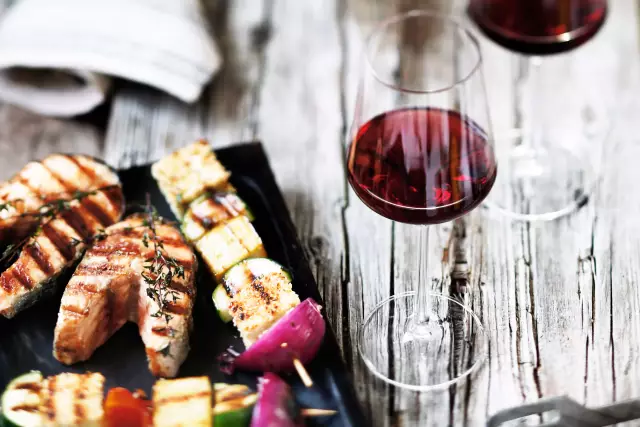Chocolate & Wine

Silky finish, incomparable sweetness, fine spices - wine or chocolate? Both can be described very well with these enjoyable attributes. And because these flavor components not only harmonize very well with each other in terms of taste, but even enhance each other, the combination of chocolate and wine promises completely new pleasurable experiences - you will simply melt away!
Facts
-
1544
was the first time, when chocolate was drunk at the Spanish court
-
7 Euro
costs a kilogram of cocoa beans
-
48 %
cocoa mass is founded in dark chocolate
The Chocolate Side of Wine
For a long time, the combination of chocolate and wine was considered incompatible. Admittedly, harmonious combinations of dry, fresh white wine with the melting and sweetness of chocolate are rather rare. The troublemaker in this relationship is the acidity of the wine, which can be pointed and dissonant in such a pairing.
Real Seduction Artists
But the liaison of chocolate with the melting and lush power of a noble sweet wine such as a Beerenauslese or even a Trockenbeerenauslese is truly seductive. Red wines are also a welcome companion to chocolate. Basically, the sweeter the chocolate, the sweeter and milder the acidity of the wine should be, so that the delicate balance is maintained.
A little gourmet tip from chocolate maker Eberhard Schell: Initially, you should taste the wine on its own. Then melt the chocolate in your mouth and sip the wine again. And then: just enjoy! Another sip of wine enhances the taste experience.
Chocolate is looking for Wine
Milk chocolate impresses with its silky finish and mild sweetness. Milk chocolates with a cocoa content of 32 to 49 percent harmonize perfectly with strong white wines from the Pinot family, but also with Riesling. The wines should also have a melty, creaminess, a subtle acidity and fine fruit notes. Mild Auslesen made from Riesling or Pinot Gris grapes, for example, are a good match. When it comes to red wine, varieties such as Lemberger, Cabernet Sauvignon, Merlot or Cuvées, that are low in tannins but can have a light vanilla note, are suitable.
Dark chocolates with 55 to 75 percent cocoa are wonderfully combined with fruity wines that bring some residual sweetness. Even sweet wines and fruity red wines like to enter into a liaison with these semi-sweet dark chocolate types, especially if they contain fruit.
Lovers of dark bitter chocolate containing up to 85 percent cocoa, swear by the pairing with dense, expressive red wines with smooth, but clearly perceptible tannins: dry Dornfelder and Lemberger, aged in barrels or wooden barrels, result in a wonderful balance with bitter chocolate.
A "Dream Wedding in White" - comes to mind if you let white chocolate melt on your tongue together with a fine fruity Riesling ice wine. The harmonic play arises here through the sweetness and finesse in both the wine and the chocolate.
No Problem when Choosing a Partner
Regardless of whether the chocolate is whole milk, dark bitter or nut: an aromatic wine goes with almost every sort. Particularly harmonious are Traminer, Muskateller and Scheurebe.
Chocolate maker Eberhard Schell: "Aromatic varities such as Traminer, Muskateller and Scheurebe combined with the right chocolate, achieve the best possible taste."
Eberhard Schell, Schell Chocolate Manufacturer
How does the wine get a chocolate touch?
Like vanilla or tobacco aromas, chocolate notes are usually created by aging and maturing the wine in barrique barrels. Among other things, roasted aromas are responsible for this, which arise from the toasting of the wood and are reminiscent of roasted cocoa beans.
Varietals

More recipe ideas
with semi-frozen goat's milk Lavender waffles
with semi-frozen goat's milk
- 2 Stück Eigelb
- 60 ml Ziegenmilch
- 500 Gramm weiße Kuvertüre
- 125 ml Sahne
- Abrieb und Saft einer halben Orange
- 2 cl Tresterbrand
- 8 Blatt Minze
- 125 Gramm Mehl
- 50 Gramm Zucker
- 70 Gramm Butter
- 2 Eier
- 1 Messerspitze Backpulver
- 1/2 EL Lavendelzucker
- 175 ml Milch
Semi-frozen goat's milk: Beat the egg yolks and goat's milk in a bowl over a hot bain-marie until creamy. Remove from the bain-marie and beat the cream until cold. Flavour with the zest of the orange and the marc brandy.
Liquefy the couverture in a bain-marie and stir into the lukewarm egg mixture. Whip the cream until stiff and carefully fold in. Line a parfait tin (triangular or gutter shape) with cling film. Pour in the mixture and smooth out. Cover well with cling film and leave to freeze in the freezer for at least 8 hours.
About 20 minutes before serving, remove the mould from the freezer and turn the parfait out of the mould. Remove the foil and cut the semi-frozen parfait into 8 slices.
<p
<p>Lavender wafers: Lightly mash the butter in a mixing bowl with a fork. Add the sugar and stir a little. Add half of the milk, the lavender sugar and the baking powder. Stir in the eggs and finally the rest of the milk. Mix everything well with a hand mixer for about 2 minutes to create a homogeneous, slightly liquid mixture. Bake the batter in batches in a waffle iron until golden brown.</p
<p>Arrange 2 slices of semifreddo on each waffle on a flat plate and decorate with mint leaves.
- Riesling (halbtrocken & feinherb)
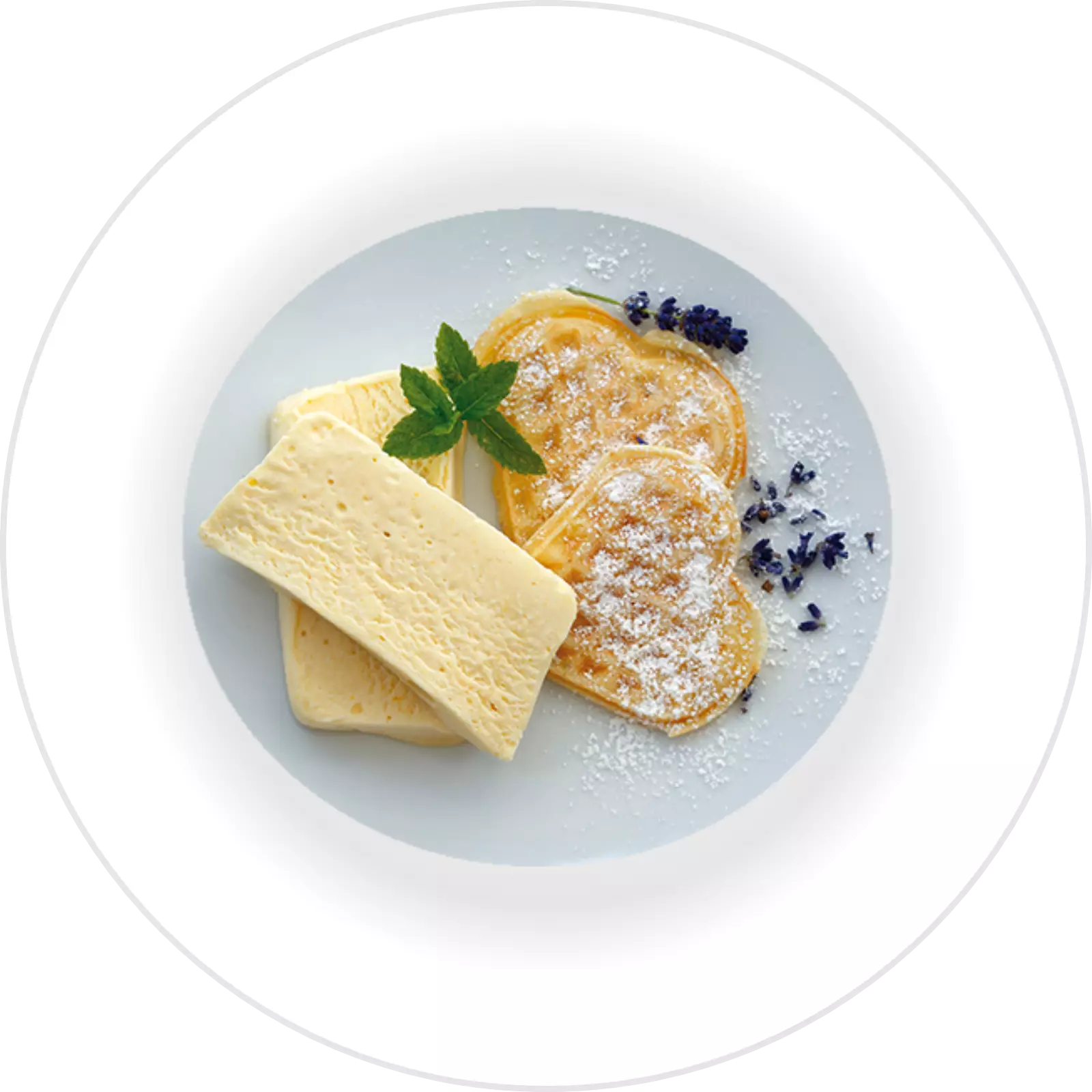
with apples and nuts Tarte flambée
with apples and nuts
- 250 Gramm Weizen- oder Dinkelmehl
- 150 Gramm Crème fraîche
- 150 Gramm körniger Frischkäse
- 2 säuerliche Äpfel
- 1 - 2 Zwiebeln
- 30 Gramm Walnüsse oder Haselnüsse
- 15 Gramm Hefe
- 1 EL Zucker
- 2 EL Olivenöl
- 2 Zweige frischer Thymian
- Nach Bedarf Salz & Pfeffer
- 200 ml warmes Wasser
For the yeast dough, sieve the flour into a bowl and make a well in it. Dissolve the yeast in a little warm water and pour into the well. Cover the bowl with a cloth and leave to rise for 10 minutes. Then knead the pre-dough with the dough hook of a hand mixer and gradually work in the warm water, the oil and a teaspoon of salt. Leave the kneaded dough to rise until it has doubled in volume (approx. half an hour, in a warm place).
Cut the onions into wedges. Roughly chop the nuts. Core the apples, cut into slices (the thicker the apple slices, the juicier the tarte flambée) and sprinkle with the sugar.
<p
<p>After resting, divide the dough and roll out each half on a baking tray lined with baking paper. Preheat the oven to 220 °C (top and bottom heat)
Spread the crème fraîche evenly over the tarte flambée and top with the apple slices and onion wedges. Spread the fresh cheese on top and sprinkle with the walnuts. Sprinkle with a little salt and pepper.
Bake on the lowest shelf for 12-15 minutes and sprinkle with the fresh thyme before serving.
- Riesling (halbtrocken & feinherb)
- Riesling (lieblich)
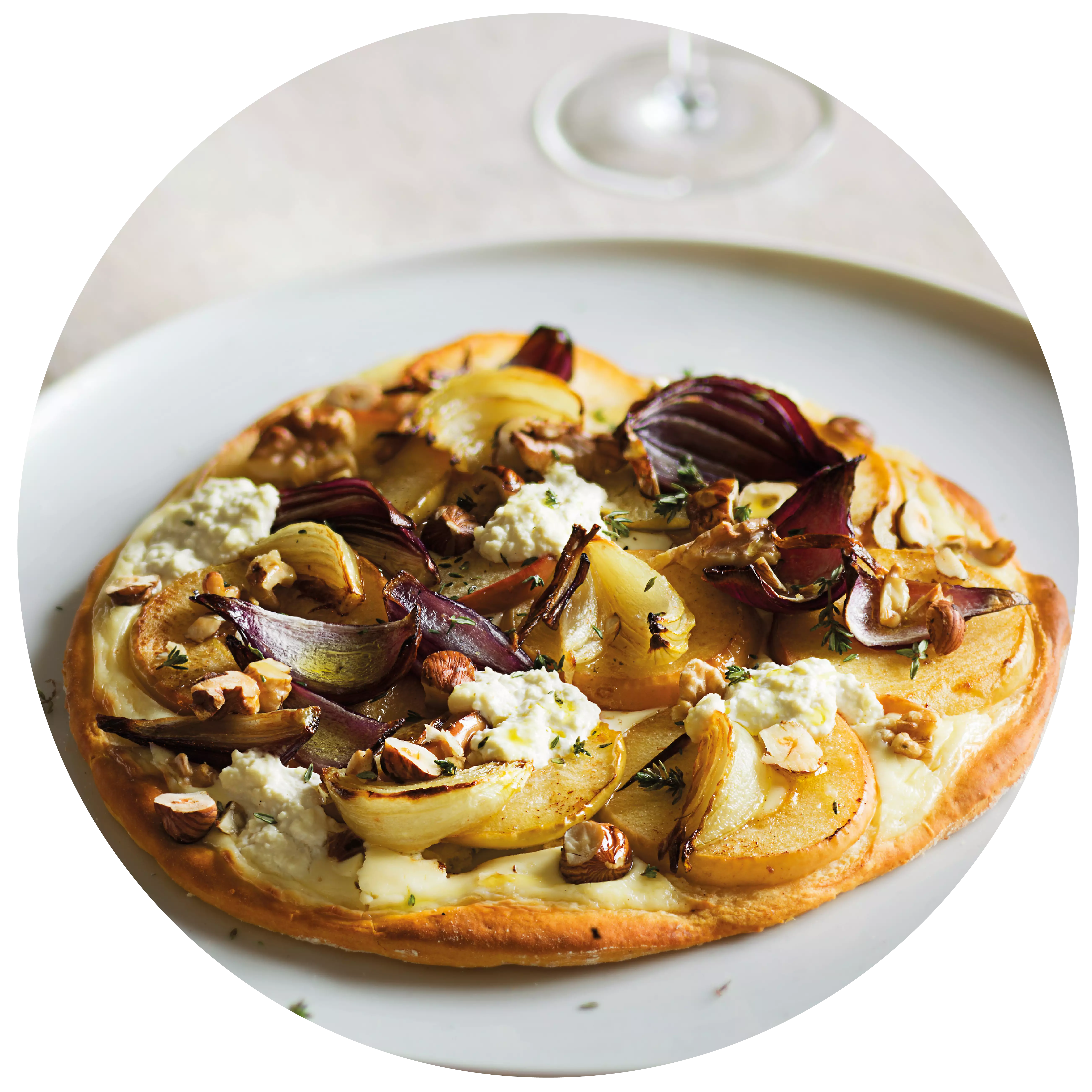
(artificial potted meat) in the style of the house "Kunschthäwwelfläsch"
(artificial potted meat) in the style of the house
- 1 kg Schweinekamm
- 2-3 ganze Zwiebeln
- nach Belieben Lorbeerblätter, ganze Nelken, gemahlener Kümmel, Pfefferkörner
- 500 ml Rivaner oder Silvaner
- nach Geschmack Salz & Pfeffer
A few days before preparation, have a piece of pork neck picked up from the butcher. Alternatively, salt and pepper the pork neck yourself before preparation. The day before, cut into the pork neck with a sharp knife at a distance of approx. 1.5 cm, but do not cut all the way through.
Peel 2-3 onions, halve and cut into rings. Prepare the bay leaves, cloves, caraway seeds and pepper. Place a few slices of onion, a clove, some ground cloves and pepper in the incisions and a bay leaf in every other incision. Place the remaining onions, one or two cloves and a bay leaf in a large roasting tube, place the meat on top and pour in the white wine. Close the roasting tube tightly and leave the meat to marinate overnight in the fridge.
Then place the roasting tube on the cold oven rack and cook for approx. 1½ to 2 hours at 200 °C (gas mark 4, fan oven 180 °C).
- Müller-Thurgau (halbtrocken & feinherb)
- Silvaner (halbtrocken & feinherb)
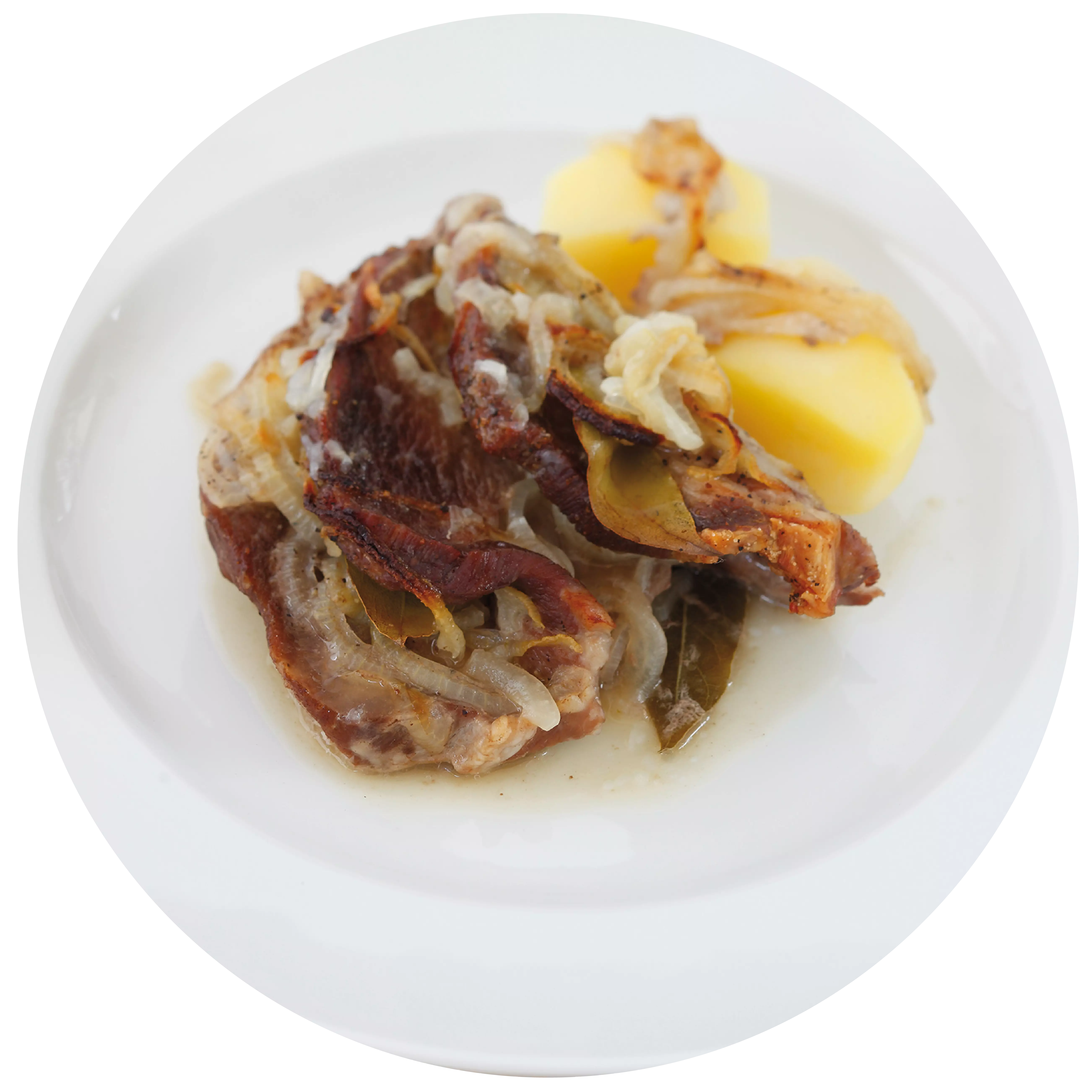
Stuffed, with paprika and pecorino Schnitzel rolls
Stuffed escalope rolls with paprika and pecorino
- Nach Belieben Pinienkerne, Basilikum, Knoblauch
- 8 Stück dünne Schweineschnitzel á ca. 75g & Holzspießchen
- 1 Glas rote geröstete Paprika
- 100 Gramm Pecorino-Käse
- Nach Bedarf Olivenöl, Salz, Pfeffer
Roast the pine nuts and leave to cool. Pluck the basil leaves and place in a blender with the finely chopped garlic, olive oil and pine nuts and blend gently. Finely grate the Parmesan and mix in. Season to taste with salt and pepper.
Wash the meat and pat dry. Drain the paprika in a sieve and finely grate the pecorino. Season the escalopes on both sides with salt and pepper and spread 1 tsp of pesto on each. Cover the escalopes with paprika, leaving approx. 3 cm free on one narrow side of each piece.
Spread the pecorino over the paprika. Roll up the meat from the coated side and pin in place with wooden skewers. Grill the escalope rolls on the barbecue for 20-25 minutes, turning if possible, and indirectly for the last 10 minutes.
- Spätburgunder / Pinot Noir (trocken)
- Lemberger (extra brut)
- Portugieser (trocken)
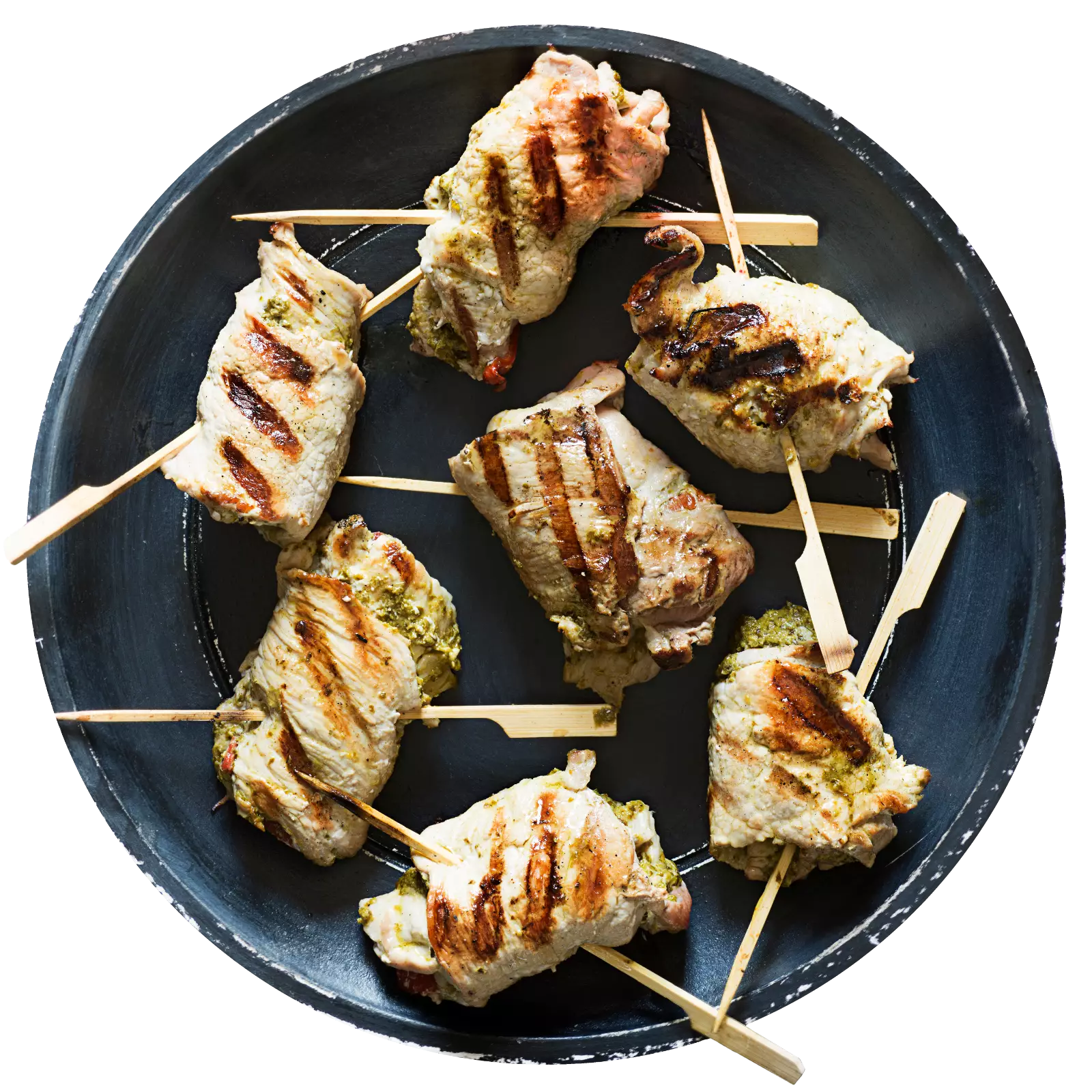
Events
-
Show
winetasting in our winery - cheese & wine
Mainz-Hechtsheim


